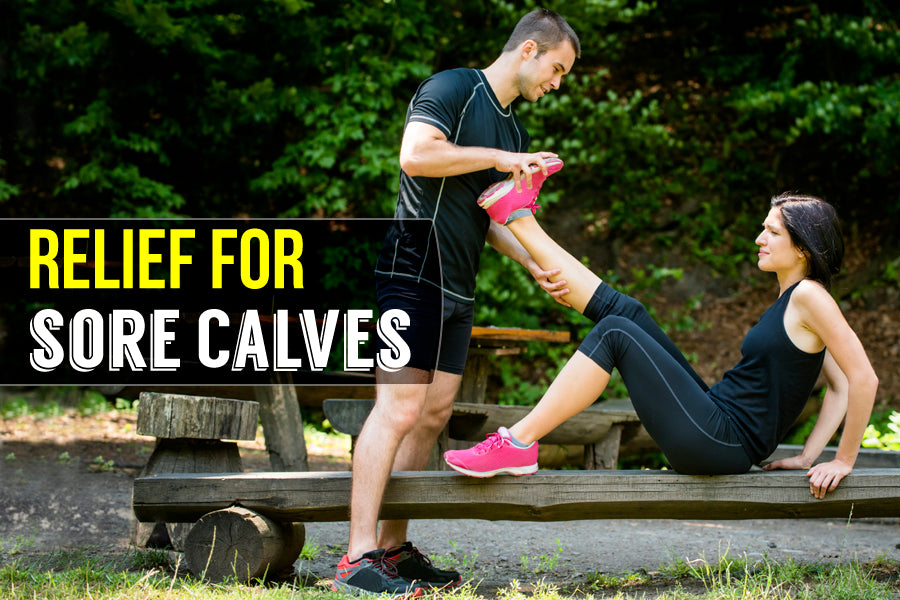Quick and Easy Relief for Sore Calves

Located at the back of your lower leg, your calf muscle is something you're probably quite familiar with - but not something that you pay much attention to - until it becomes sore. Calf muscles can easily become strained, sore, or achy as a result of excessive physical activity, long-term overuse, or a direct injury - and if you're a fan of running, or trying to live an active lifestyle, painful calves can be the hurdle that throws your entire world off track.
While dynamic stretching before exercise can be a good way to warm up calf muscles and reduce your chances of over-stretching them, a good routine doesn't necessarily mean that you can avoid all pain. Fortunately, if you do find yourself struggling after a particularly challenging run or a long day lifting heavy objects at work, the following tips offer quick and simple relief for sore calves.
Disclaimer: Please remember to discuss the following treatment options with your doctor before attempting any. Your healthcare provider will be able to offer the best advice on which methods will work for your personal circumstances.
1. Rest
If, like many people today, you live a hectic life filled with commitments, resting may be the last thing you want to do to repair your aching muscles. Unfortunately, the intensity of a strained or sore calf can vary from mild to severe, and in some cases your doctor may request that you take some time off your feet before you try to use the muscle again. Often, you'll still be able to go to work and complete regular activities as normal, but you'll need to avoid intense exercise as much as possible.
2. Compress
Another quick and easy way to get relief for sore calves is to compress the aching muscle with a calf compression sleeve. Not only will a compression sleeve help to offer some additional support to your lower leg when you're walking around, but it will also promote healthy circulation throughout the muscles, tendons, and ligaments - essential for encouraging a quick recovery.
3. Reduce Swelling with Ice and Painkillers
If you notice inflammation around the calf muscle - a symptom common with overexertion - try applying cold compresses or ice packs to the area for twenty minutes every four hours or so. This will help to reduce the swelling and could reduce some of the discomfort you are feeling. Importantly, if your leg is swollen, you should wait for the inflammation to subside before you apply a compression sleeve. It's also worth taking over-the-counter pain relievers such as acetaminophen and ibuprofen with the blessing of your doctor - just be sure to check package directions beforehand.
4. Try Some Gentle Heat
After the swelling has been reduced, you can try using some heat around the calf muscle to help promote good circulation in your injured limb and reduce discomfort. Research has suggested that heat therapy is often most beneficial after you have returned to a normal level of activity in your calf muscle, as it can prevent further cramps from occurring as a result of the healing process. Try using a heating pack several times a day as quick relief for sore calves - particularly before stretching or exercise.


Leave a comment